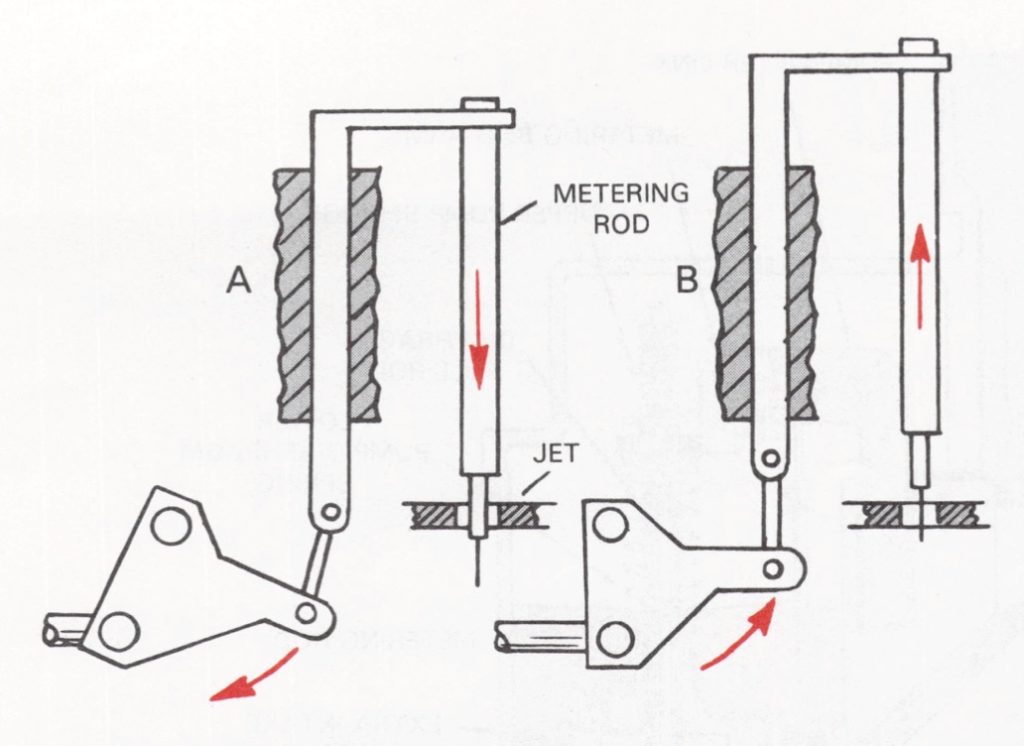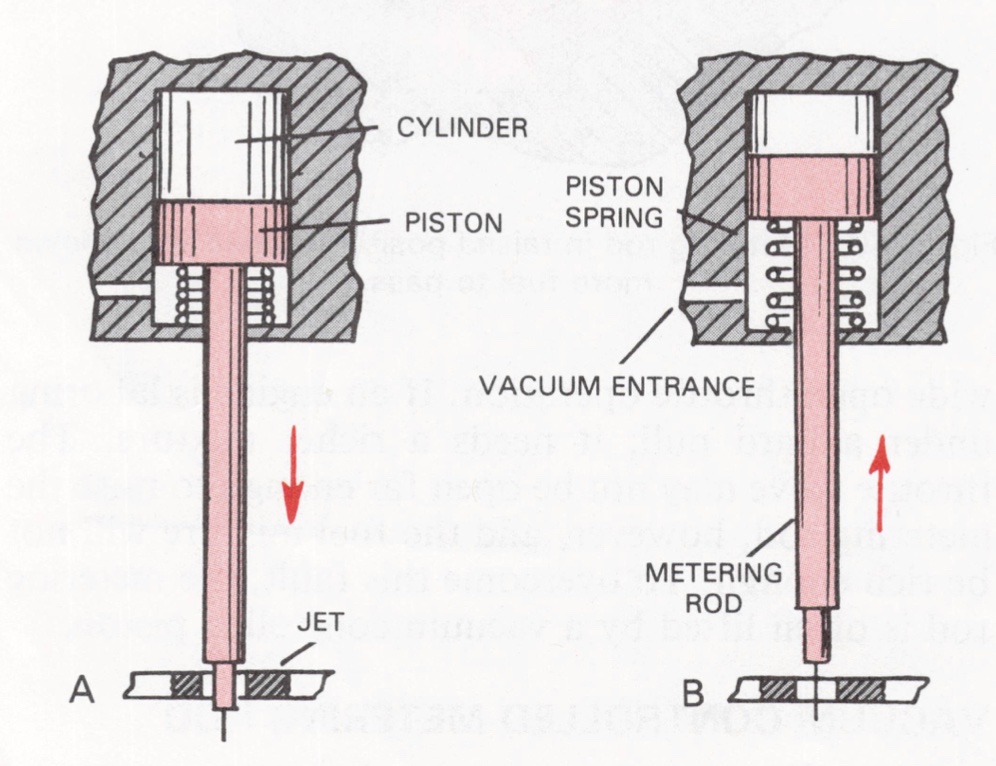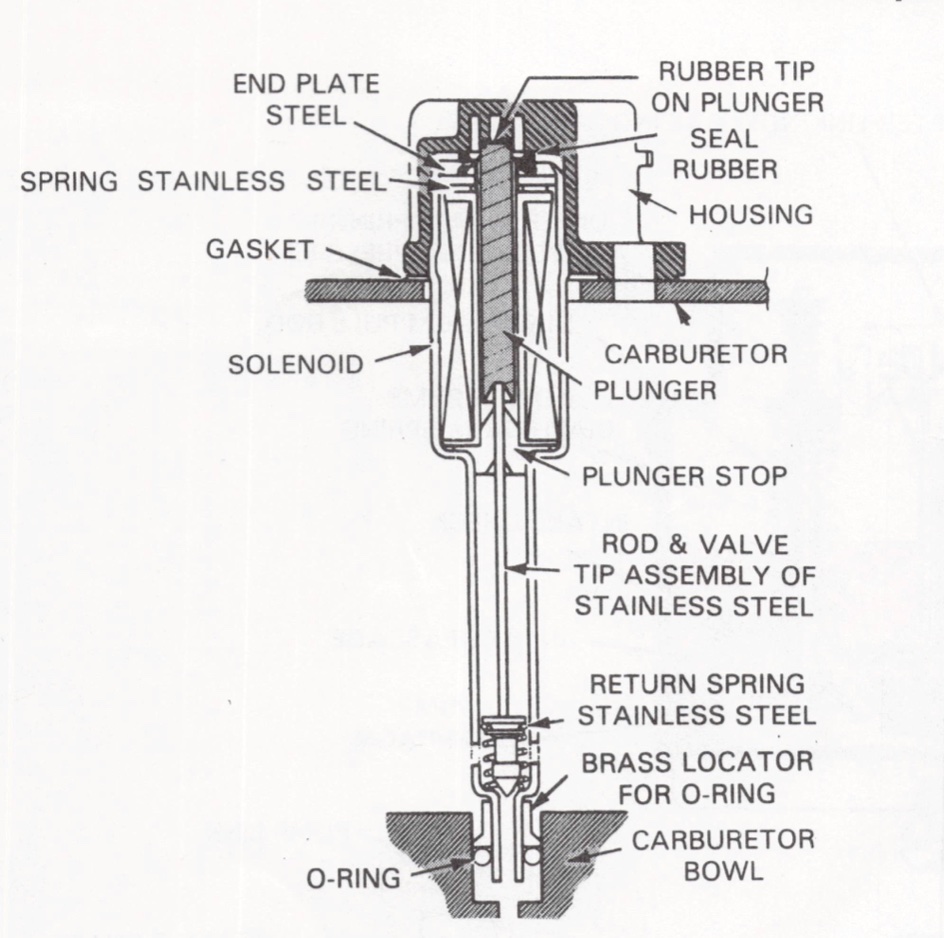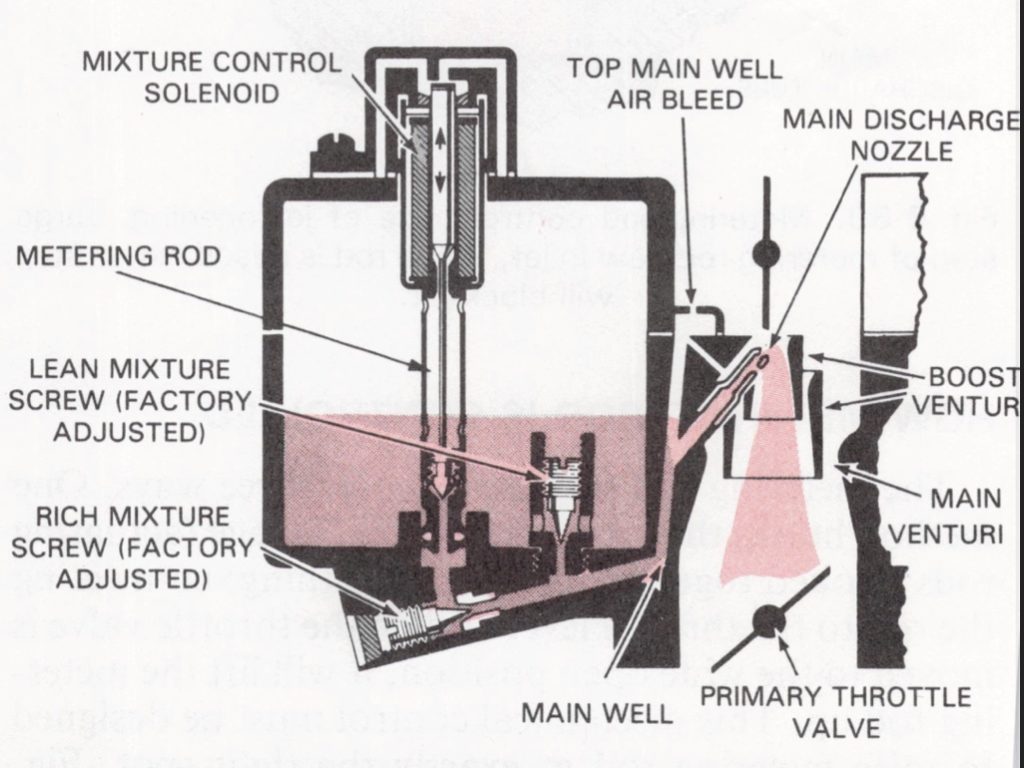A stepped rod, called a metering rod, is placed in the center of the metering rod jet on some carburetors. This metering rod partially plugs the opening, thereby limiting the flow of fuel.
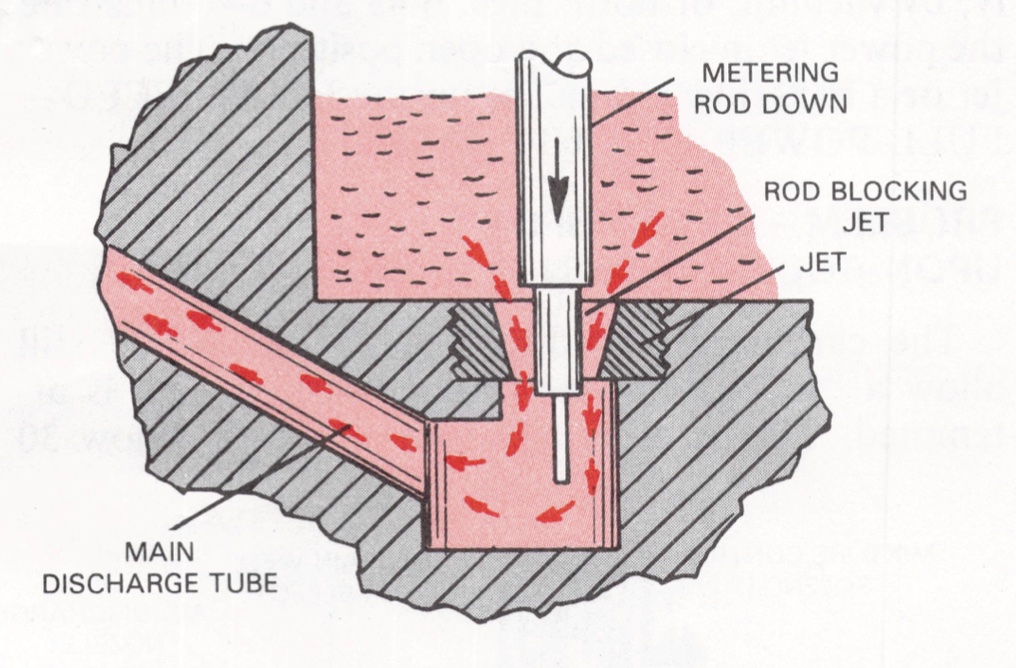
To obtain more fuel for our high speed – full power range, it will be necessary to lift the metering rod up far enough so the larger step is removed from the jet. This leaves the small step in the jet, and it will allow more gas to flow through.
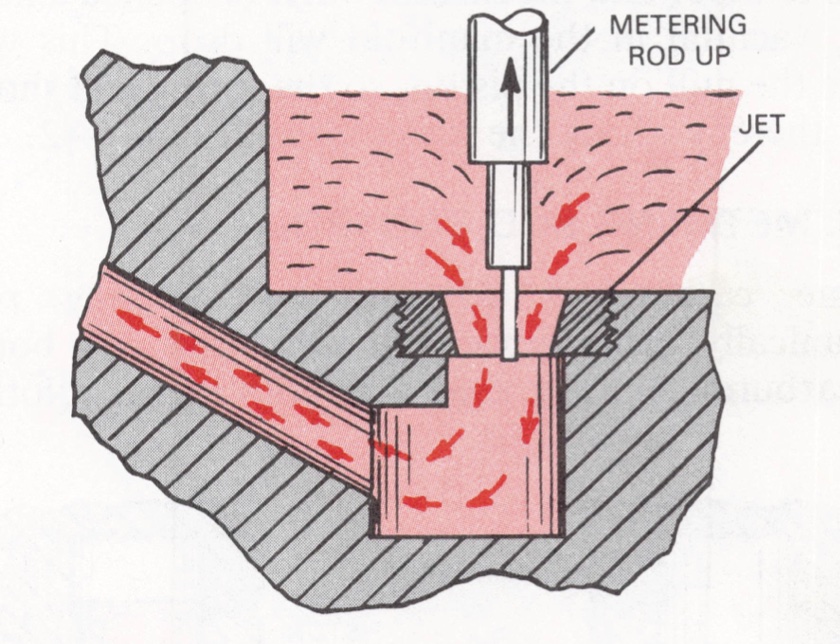
The metering rod may be lifted in three ways. One method hooks the top of the rod to linkage connectingthe rod to the throttle lever. When the throttle valve is moved to the wide open position, it will lift the metering rod up. This mechanical control must be designed to raise the metering rod at exactly the right spot.
A mechanically controlled metering rod is fine for wide open throttle operation. If an engine is laboring under a hard pull, it needs a richer mixture. The throttle valve may not be open far enough to raise the metering rod, however, and the fuel mixture will not be rich enough. To overcome this fault, the metering rod is often lifted by a vacuum controlled piston.
In this case the metering rod is hooked to a vacuum pistion or, in some cases, to a diaphragm. The piston is spring loaded to keep it in a certain position, in the case of the image it’s up. When vacuum is applied to the piston, it overcomes the spring pressure and pulls the metering rod down, partially closing the jet.
This vacuum passage reaches from the piston, or diaphragm, down through the carburetor, through the mounting flange and into the intake manifold.
As the car moves along with the throttle in high speed cruising range, there is a fairly strong vacuum in the intake manifold. This vacuum keeps the metering rod piston in the down position. When the engine begins to labor and the throttle valve is opened a little more, vacuum in the manifold will drop. This will reduce the pull on the piston, so the spring will shove it up, thereby lifting the metering rod.
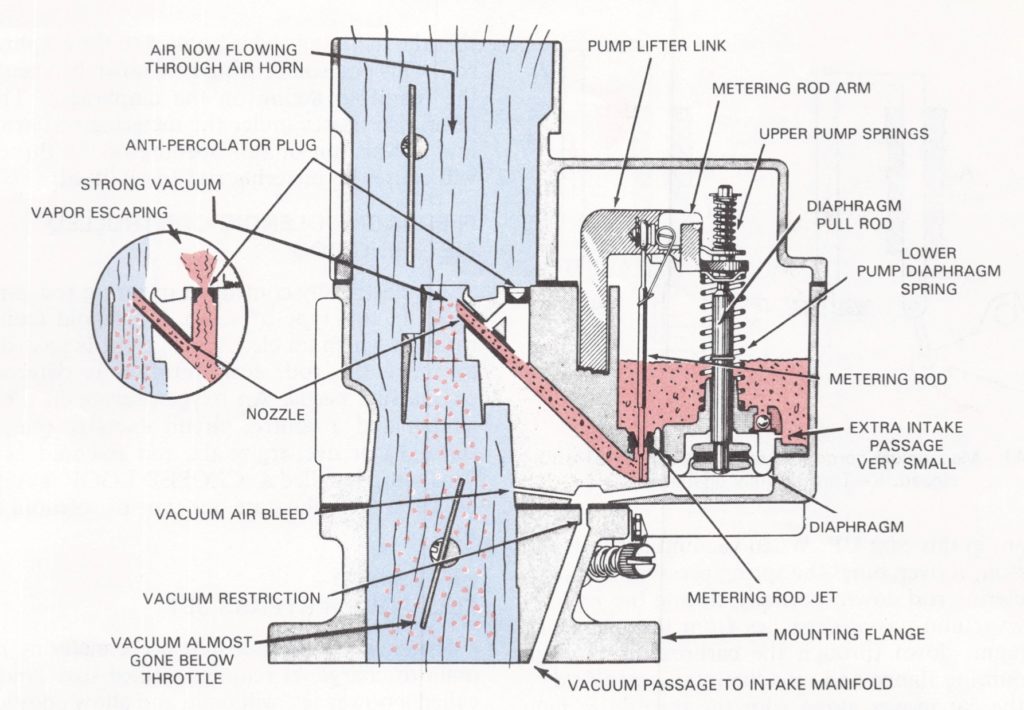
Some carburetors use both mechanical and vacuum control on the metering rods as illustrated in the image above. The metering rod is hooked to the diaphragm pull rod. This pull rod is being held down by vacuum from the manifold acting on the diaphragm. The pump lifter also passes under the metering rod arm. Either loss of vacuum or full opening of the throttle valve will cause the metering rod to be lifted.
In some carbs an electrically controlled metering rod can also be used. In this type of setup, a solenoid is used to move the rod. Rod position is determined by engine fuel needs. An oxygen sensor in the exhaust stream and a control circuit energize or deenergize the rod solenoid as needed. This is called a CLOSED LOOP and would look something liked this

